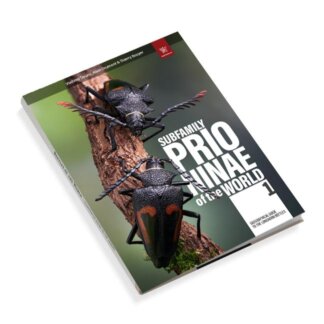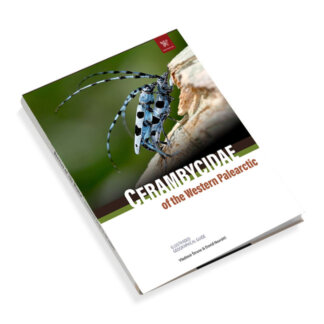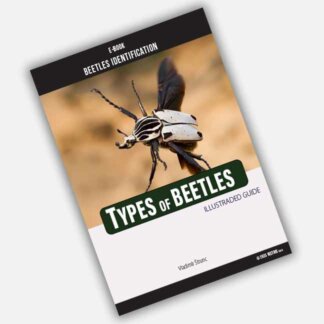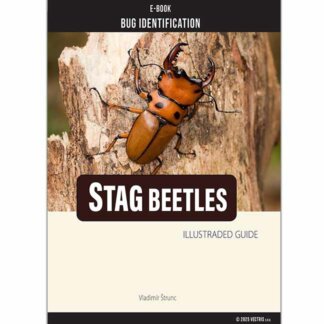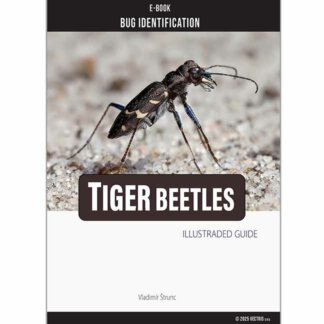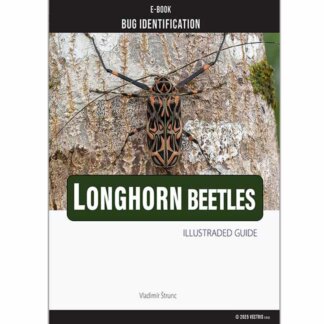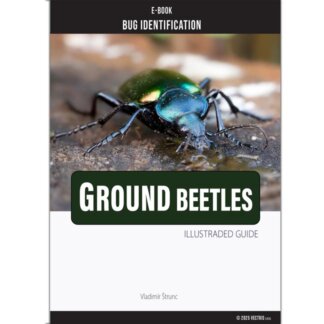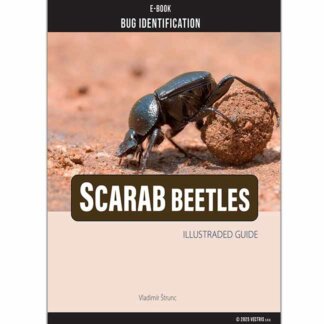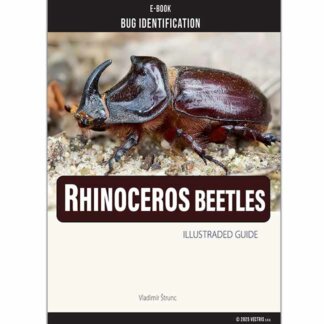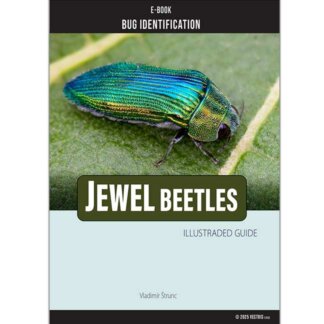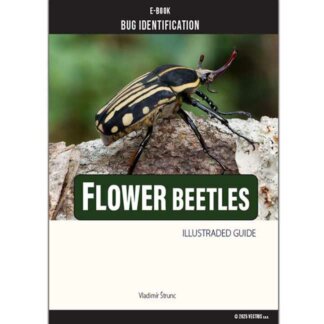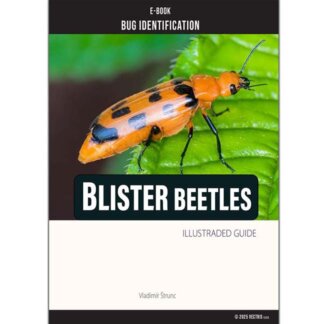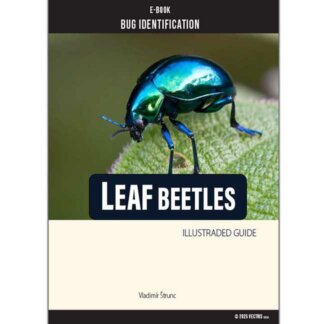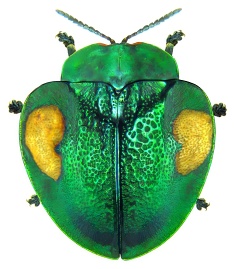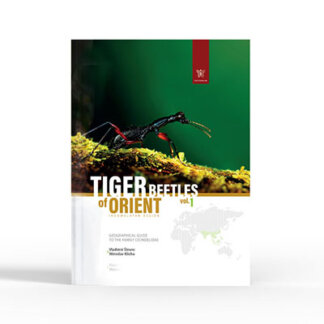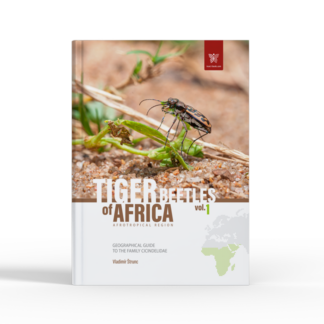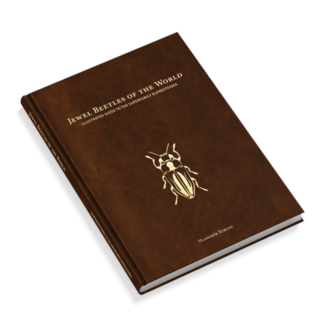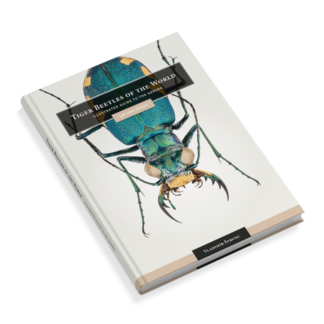Unique atlases with photos. The Chrysomelidae family, commonly referred to as leaf beetles, is a prominent group within the Coleoptera order. This family is notable for its wide-ranging morphological diversity and ecological functions, encompassing over 37,000 identified species globally. Leaf beetles are primarily herbivores, feeding on various plants, which can yield both positive and negative impacts on agriculture and ecosystems.
Book novelties:
Prioninae of the World I., Cerambycidae of the Western Paleartic I. June Bugs,
Types of beetles insects
New E-Book: Ground Beetles, Tiger Beetles, Longhorn Beetles, Jewel Beetles, Stag Beetles, Carpet Beetles, Scarab Beetles, Rhinoceros Beetles, Weevil Beetles, Blister Beetles, Leaf Beetles, Flower Beetles,
Start Shopping, Start Saving – prices from $3 USD
Chrysomelidae
We recoment: carabidae, buprestidae, cerambycidae, cicindelidae, scarabaeidae, chrysomelidae, curculionoidea, staphylinidae, family coleoptera beetles, tiger beetle, ground beetle, longhorn beetle, jewel beetle, beetles of africa, goliath beetle, stag beetle lucanidae, weevil beetles, carpet beetles
Coleoptera Beetles
Leaf Beetles
-
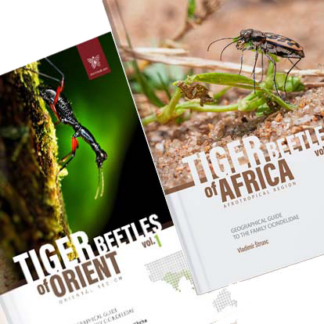 The Tiger Beetles Bundle
Product on sale
€ 249.00
The Tiger Beetles Bundle
Product on sale
€ 249.00
-
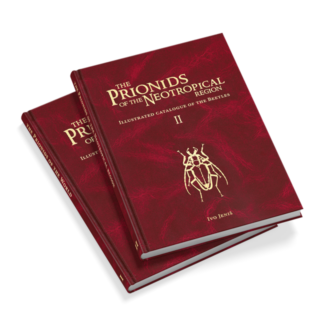 The Prionids Collection Bundle
Product on sale
€ 99.00
The Prionids Collection Bundle
Product on sale
€ 99.00
-
 The Tiger Beetles BundleProduct on sale€ 249.00
The Tiger Beetles BundleProduct on sale€ 249.00 -
 The Prionids Collection BundleProduct on sale€ 99.00
The Prionids Collection BundleProduct on sale€ 99.00
Books about Beetles
Unique pictorial atlases for identifying Beetles:
(2020) Tiger Beetles of the World, Cicindelidae, Illustrated guide to the genera
(2023) Tiger Beetles of Africa, Cicindelidae, Geographical guide to the family Cicindelidae
(2024) Tiger Beetles of Orient, Cicindelidae, Geographical guide to the family Cicindelidae
(2022) Ground Beetles of Africa, Afrotropical Region
(2022) Jewel Beetles of the World, Buprestidae, Illustrated guide to the Superfamily Buprestoidea
(2008) The Prionids of the World, Prioninae, Illustrated catalogue of the Beetles
(2010) The Prionids of the Neotropical region, Prioninae, Illustrated catalogue of the Beetles
Overview of the Chrysomelidae Family
Family Chrysomelidae
Morphological Characteristics
Members of the Chrysomelidae family display an extensive array of colors and patterns, often serving as a warning mechanism to ward off predators. Their sizes can vary significantly, ranging from as small as 1 mm to more than 30 mm in length. Typically, their bodies are oval or rounded, facilitating movement through dense vegetation.
Ecological Roles
Leaf beetles are particularly important in their interactions with plants. Certain species are recognized as major agricultural pests, inflicting damage on crops such as potatoes, corn, and soybeans. A prime example is the Colorado potato beetle (Leptinotarsa decemlineata), notorious for its rapid reproduction and pesticide resistance, posing a considerable challenge for farmers. Conversely, some species within the Chrysomelidae family serve as biological control agents by preying on harmful plant pests.
Adaptations and Defenses
Research suggests that Chrysomelidae beetles have developed various adaptations to thrive in their environments. For instance, some species possess specialized mouthparts tailored for feeding on specific plant families, while others have evolved chemical defenses to deter herbivory. Approximately 30% of leaf beetle species exhibit some form of chemical defense mechanism, which may include the production of toxic substances or the ability to sequester toxins from their host plants.
Reproductive Behavior
In terms of reproduction, Chrysomelidae beetles typically partake in intricate courtship rituals that may involve visual displays or pheromone signaling. Females generally lay their eggs on or near suitable host plants to ensure that larvae have immediate access to food upon hatching. The life cycle of these beetles consists of four stages: egg, larva, pupa, and adult, with the duration of each stage influenced by environmental factors and species.
Conclusion
Leaf Beetles
Chrysomelidae
In summary, the Chrysomelidae family is vital to both ecological systems and agricultural practices. Gaining insights into their biology, behavior, and plant interactions is crucial for effective pest management and conservation strategies. Ongoing research into this diverse group of beetles will enhance our understanding of their ecological importance and potential roles in sustainable agriculture. Leaf Beetles.
Family Chrysomelidae: Advantages and Disadvantages
The family Chrysomelidae, commonly known as leaf beetles, is one of the most diverse and widespread groups of beetles, comprising over 37,000 species. These beetles play a significant role in ecosystems, serving both as pests and beneficial organisms. Here are some of the key advantages and disadvantages associated with the Chrysomelidae family:
Advantages
Ecological Role: Leaf beetles are crucial in maintaining ecological balance. They help control plant populations, which can prevent any single species from dominating an ecosystem. Some species are used in biocontrol to manage invasive weeds, thereby preserving biodiversity.
Nutrient Cycling: As herbivores, leaf beetles contribute to nutrient cycling by consuming plant material and converting it into a form that is accessible to other animals in the food chain.
Diversity and Adaptation: The vast diversity within Chrysomelidae allows them to adapt to various environments and feed on a wide range of plant tissues, from leaves to roots. This adaptability is a testament to their evolutionary success.
Scientific Interest: The colorful and often bizarre shapes of some leaf beetles make them popular among collectors and scientists, contributing to our understanding of insect evolution and diversity. Leaf Beetles.
You can find here: Carabidae, Buprestidae, Cerambycidae, Cicindelidae, Scarabaeidae, Lucanidae, Curculionidae, Staphylinidae
Disadvantages
Agricultural Pests: Many species of leaf beetles are significant pests of cultivated plants. For example, the Colorado potato beetle (Leptinotarsa decemlineata) and the asparagus beetle (Crioceris asparagi) can cause substantial economic losses in agriculture.
Disease Vectors: Some leaf beetles act as vectors for plant diseases, further exacerbating their impact on crops and ecosystems.
Invasive Species: Non-native leaf beetles can become invasive, disrupting local ecosystems by feeding on native plants and potentially outcompeting native herbivores.
Household Nuisance: Some species may enter homes during the fall, seeking shelter, and become a nuisance.
In summary, while the Chrysomelidae family presents several ecological benefits, their role as pests and potential vectors of disease highlights the complex nature of their impact on ecosystems and human activities.
The family Chrysomelidae, commonly known as leaf beetles, is one of the most diverse and economically important beetle families in the order Coleoptera. Distinct Chrysomelidae characteristics include compact, often brightly colored bodies and well-segmented Chrysomelidae antennae, which are typically filiform or slightly clubbed.
Chrysomelidae larvae are phytophagous (plant-eating), like their adult counterparts, and are responsible for significant leaf beetle damage to crops and ornamentals. A well-known example is Platyphora sp., Chrysomelidae, recognized for its toxicity and vibrant coloration. Another notable species, the spotted leaf beetle, causes visible foliar damage, making it a key pest in many agricultural regions.
The leaf beetle scientific name refers broadly to any species within Chrysomelidae, though more specifically, leaf beetles scientific name often refers to individual genera and species, such as Diabrotica virgifera or Galerucella calmariensis. For example, the bean leaf beetle scientific name is Cerotoma trifurcata, a common pest in North American soybean fields.
Beyond beetles, interest in mimicry and leaf-like morphology extends to phasmids. Leaf insect care is an essential topic for hobbyists, especially for those handling leaf insect nymphs for sale or leaf insect eggs for sale. Species such as Phyllium philippinicum are common among collectors, particularly in the leaf insects for sale USA market.
These insects mimic leaves as a defense mechanism and are often mistaken for other arthropods. In terms of classification, the leaf bug scientific name typically refers to members of the order Hemiptera, such as Chorocoris, while leaf bug facts emphasize their camouflage and herbivorous diet. Understanding the difference between similar juvenile forms, such as the leaf footed bug nymph vs assassin bug nymph, is crucial in both ecological studies and pest management.
In gaming, insects are well-represented as well; in Animal Crossing: New Leaf, many bugs in Animal Crossing New Leaf—including beetles and phasmids—reflect real entomological species, sparking interest in insect diversity among players.
Lastly, leaf bug eggs, like those of phylliids, require specific humidity and temperature conditions to hatch successfully. These eggs are a focal point in breeding programs and contribute to educational discussions on insect developmental stages and biodiversity.
In summary, whether studying leaf beetle species, breeding exotic phasmids, or identifying pest damage, the Chrysomelidae and related insect groups offer a rich field for entomological exploration.
